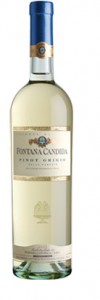From Fontana Candida Wines
Language of Wine

Some of the language used to describe wine can be confusing and intimidating. Don’t let it scare you away. Listed below are some of the most commonly used wine terms and their meanings. The more familiar you become with wine terms the easier it will be to find wines that appeal to you and your friends.
Acidity
The quality of tartness or sharpness in the taste of a wine is due to the presence of natural acids. Acids are what create the refreshing sensation in white wines, and the balance in reds.
Aroma
The fragrances that come from the grapes or the fruit from which the wine is made.
Balance
A tasting term that refers to the harmonious balance of wine elements so that no single part of the wine overpowers another. Acid balances sweetness. Fruit balances oak and tannin content. Alcohol balances acidity and flavor.
Body
Body describes the effect of a wine on the taster’s palate. A wine with lots of flavor, alcohol, extract and tannin may be described as “full-bodied” or “meaty.”
Bouquet
The bouquet is the smells created by the fermentation and aging process that takes place in the barrel and bottle.
Complexity
A combination of richness, intensity, balance, finesse, harmony and depth of flavor. It’s what separates great wines from merely good ones.
Corked
A wine that has a smell or taste of wet cardboard or mold is said to be “corked” because the cork is believed to be the source of the tainted aroma and flavor.
About 3% of all wines worldwide are tainted by cork.
Crisp
Generally used to describe a white wine with a noticeable but pleasing tartness or acidity.
Cryomaceration
A winemaking procedure used in making white wines that holds the skins and crushed grapes at extremely low temperatures prior to fermentation, thus enhancing the fruit and other flavors.
Dry
In wine, “dry” is the opposite of “sweet.” A dry wine has little or no noticeable sugar in the taste, usually less than 2%. “Dry” is also used to describe the mouthfeel of a wine that causes a dry, puckering sensation.
Finish
The aftertaste or tactile and flavor impressions left in the mouth when a wine is swallowed.
Generic Wine
Wines named after European wine-producing districts rather than grapes, such as Burgundy, Chablis, Champagne, Port, Rhine, Sauternes, Sherry and so on.
Legs
After you swirl a wine, notice the sides of the glass and how the wine drips back down. These are called the wine’s “legs” or “tears.” The more alcohol a wine has, the more legs or tears you’ll see.
Malolactic Fermentation
A secondary fermentation that converts harsh acids to milder ones. Most red wines undergo a malolactic fermentation, as do some whites. In white wines it often produces a lovely buttery or creamy texture.
Maturity
A wine is mature when all of its characteristics have aged long enough to reach their peak. It is the optimum time to drink the wine.
Proprietary Wine
Wines carrying a made-up name originated by a specific winery or proprietor.
Sediment
The solid material that settles to the bottom of any wine container. Sediment occurs naturally in wine and is not an indicator of quality.
Tannin
A bitter substance found in the seeds, stems and skins of grapes. It is quite astringent and causes a puckering sensation in the front of the mouth. Tannins are also natural preservatives that help the development and balance of a wine.
Varietal Wine
Wines named after the dominant grape used to create them – Chardonnay, Merlot, Pinot Grigio, and Sangiovese. At least 75% of that grape variety is required for a wine to be called a varietal.
Vintage
The year that the grapes were picked or harvested for the making of wine, with the date shown on the label.
